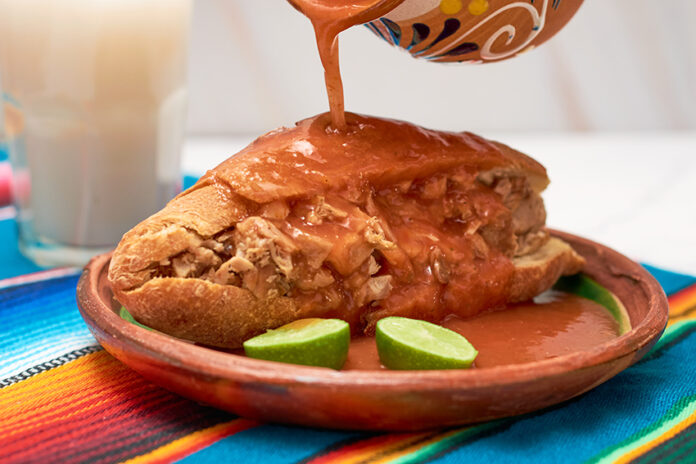Let us know how you did!
Direct funding for Indigenous communities’ infrastructure: Friday’s mañanera recapped
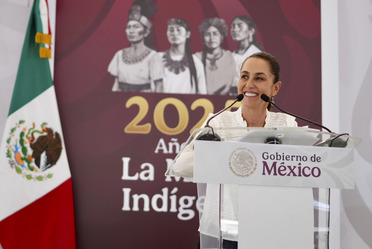
“Today is International Indigenous Women’s Day,” President Claudia Sheinbaum noted at the start of her Friday morning press conference.
“As you know, we dedicated this [entire] year to Indigenous women,” she added.
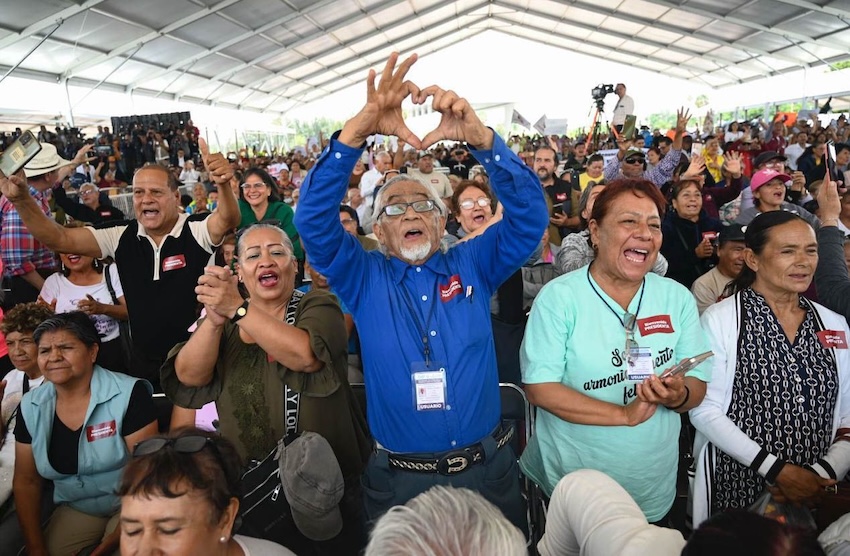
“… On this day we want to commemorate, celebrate and recognize Indigenous women, who for years were made invisible, not by their communities or by themselves, but by society. In this racism that prevailed in Mexico for so many years, and which still exists among many people, the Indigenous woman was the most discriminated against — for being a woman, for the color of her skin and for being Indigenous,” Sheinbaum said.
“But we want to stand up for Indigenous women because, first, they are the essence of Mexico, they’re the ones who pass on culture and who pass on languages,” she said.
In her opening remarks at her final mañanera of the week, Sheinbaum also noted that the government’s women’s rights pamphlet, la Cartilla de Derechos de las Mujeres, has now been translated into 35 Indigenous languages.
Sheinbaum: Indigenous communities receive direct funding for the ‘first time in history’
Sheinbaum reminded reporters that the federal government is now providing direct funding to Indigenous communities that allows them to carry out infrastructure projects of their choice.
She said that there are more than 20,000 Indigenous communities across Mexico that are eligible for the funding.
“Now, for the first time in history, the communities receive a direct budget, all of them,” Sheinbaum said.
“It’s a [combined] amount of around 13 billion pesos [US $694.7 million], and we want this amount to continue increasing,” she said.
The funding can support projects such as drinking water systems, schools, housing, streets and sidewalks, sewage and electrification — each chosen by the communities themselves through local assemblies without the intervention of municipal, state or federal authorities.
“There is a fourth level of public funding, which is direct to Indigenous communities, for the first time in history,” Sheinbaum said.
She said that the amount of funding each community receives is dependent on its population and the “level of marginalization or poverty” that exists within it.
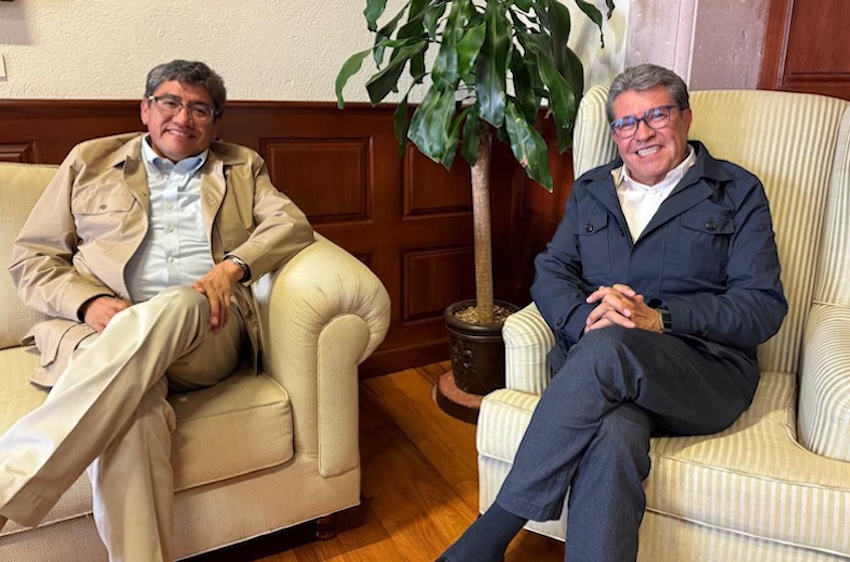
“[There is] an established formula,” Sheinbaum said.
” … Who is the money given to? To whom the community decides. The community, in assembly, chooses a committee,” she said.
“… Who is the person who manages the money? It was determined that it be a woman from the community. The treasurers are women,” Sheinbaum said.
Governor Monreal followed by Governor Monreal? Sheinbaum says no
A reporter noted that Morena party Senator Saúl Monreal has expressed interest in running as a candidate in the 2027 election for state governor in Zacatecas, a position currently held by his brother, David Monreal.
“He says that if the people of Zacatecas decide so, he’ll be on the ballot, and he mentioned yesterday that it could even be for the Labor Party or the Green Party” the reporter said before asking Sheinbaum her opinion on the matter.
“I’m not going to get into a debate with Saúl,” the president said.
Sheinbaum subsequently said that her view is that relatives of a person in power, whether a governor, a mayor, a deputy, or a senator, shouldn’t be allowed to seek to succeed that person immediately after their term ends.
“That’s why I sent the initiative and that’s why it was approved,” she said, referring to a constitutional reform that aims to eliminate nepotism in politics.
The reform, however, won’t take effect until 2030, meaning that Saúl Monreal won’t be constitutionally barred from contesting the 2027 gubernatorial election in Zacatecas.
However, as Sheinbaum noted, Morena decided that it won’t allow its candidates to seek to succeed a relative starting in 2027. For that reason Monreal floated the possibility of contesting the election for the Labor Party or the Green Party, both of which are Morena allies.
The president suggested that the senator should wait until 2033 before seeking the governorship of Zacatecas, a position that another Monreal brother, Deputy Ricardo Monreal, also held.
A busy weekend for the president
Sheinbaum noted that she would set off to Guanajuato after her press conference and from there travel on to Aguascalientes and Zacatecas later on Friday.
As she announced on Tuesday, the president intends to visit all 32 states of Mexico to present reports pertaining to each entity. She presented the first of those reports in Guanajuato on Friday.
“Tomorrow we’re going to be in Durango, Sonora and Nuevo León,” Sheinbaum said.
“And on Sunday [I’ll be] in Coahuila, Tamaulipas and Veracruz. It’s accountability, the accountability tour,” she said.
On Tuesday, she said she would “report on the welfare programs in each state, the public works that we’re doing in each state [and] the other things that are coming for [each] state.”
“It’s an effort to be accountable,” said Sheinbaum, who on Monday delivered her first annual government report to the nation in a 70-minute speech at the National Palace.
By Mexico News Daily chief staff writer Peter Davies ([email protected])
Maya Train gets final approval for a new freight terminal in Cancún
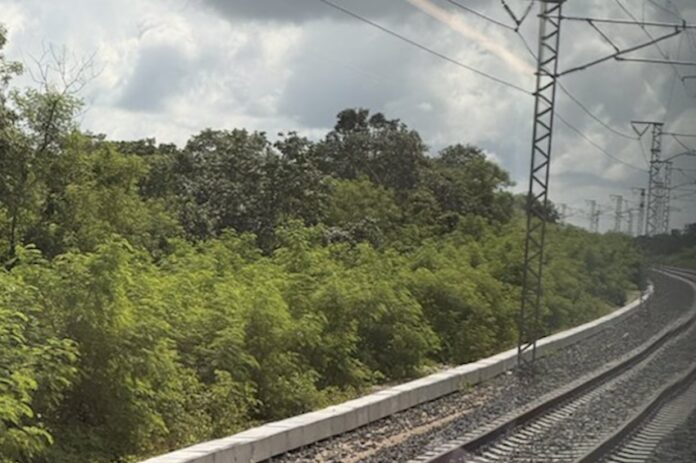
Mexico’s Environment and Natural Resources Ministry (Semarnat) approved on Monday the construction of the Maya Train cargo terminal in Cancún, with 260 hectares of jungle expected to be cleared for its development.
The approval represents a step toward the completion of the state-owned Maya Train’s freight network, which is expected to be operational next year.
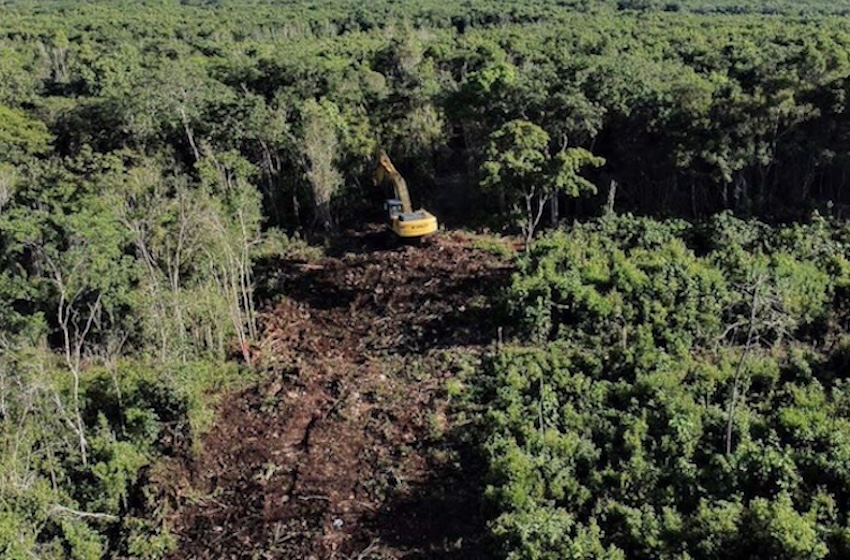
The approval of the Environmental Impact Statement, submitted in March, will allow for the construction of the Cancún Multimodal Terminal, south of the city’s international airport and east of the passenger Maya Train station.
Mexico’s Defense Ministry will have 18 months to complete the project, with a reported public investment of 7.76 billion pesos (US $415 million).
The new terminal will house 28 facilities, including warehouses, a hazardous waste storage site, housing for National Guard officers and train crews, a customs inspection area and other cargo service infrastructure.
It will connect to Section Five of the Maya Train, which runs south to Playa del Carmen and Quintana Roo, as well as to Section Four, which connects with the Mérida and Campeche stations.
Semarnat has said that an additional permit will be required from the Safety, Energy and Environment Agency (ASEA) for the installation of two diesel storage tanks for locomotive fueling, with a combined capacity of 240,000 liters.
The new terminal will cover approximately 261 ha (645 acres), with 259.5 ha of forest to be cleared for its construction, according to the MIA.
Environmentalists around the globe have expressed concern over Mexico’s Maya Train development in recent years, as the railway traverses some of the world’s most sensitive ecosystems, including thousands of subterranean caves as well as extensive jungle.
Semarnat’s assessment of the new terminal development showed that 12 at-risk wildlife species are present in the area, including the endemic ocellated turkey.
With reports from El Economista, Mexico Business News and Reuters
Mexico’s Vemo raises $250M to expand EV use and build charging stations

Vemo, a Mexico City-based electric taxi operator that partners with Uber, recently raised US $250 million to accelerate its expansion in a bid to support the country’s transition to electric mobility, primarily using Chinese technology.
In a statement released on Sept. 2, Vemo said it received the majority of this funding from the U.S. private equity firm Vision Ridge Partners, “a global sustainable real assets investor” based in Boulder, Colorado.

(@XakataLATAM/on X)
Vemo has raised over US $350 million in equity overall from leading international investors, including New York City-based Riverstone Holdings, which was its initial backer.
According to Roberto Rocha, co-founder and CEO of Vemo, the Mexico City-based company plans to use the new funding to expand its taxi fleet in Mexico City, Guadalajara and Monterrey. It will also expand the electric vehicle charging infrastructure in Mexico, he said.
“We decided it was the right time to raise additional capital in order to move forward and grow much faster,” Rocha told digital news service Bloomberg Línea.
Boulder, Colorado-based Vision Ridge, which manages approximately US $5.1 billion in assets, said Vemo is its first direct foray into Mexico.
“Mexico is a region with extraordinary potential for electric mobility, as evidenced by Vemo’s success to date,” Paul Luce, CEO of Vision Ridge, told Bloomberg Línea in an email.
Most of Vemo’s electric vehicles are manufactured in China, which could pose a problem as persistent pressure from the U.S. government prompted Mexico to announce last week that it is planning to raise tariffs on Chinese imports, including automobiles.
Bloomberg Línea reported that Vemo is seeking to diversify its fleet to include electric vehicles from U.S. manufacturers, but “its CEO is betting that Mexico will continue to welcome imported technology from China.”
The adoption of electric vehicles in the country “depends on Chinese technology and the integrated supply chain of companies” in Mexico, Rocha said.
But the China issue is not being ignored. Although Vemo plans to invest US $1.5 billion in Mexico over a period of five years, it could relocate its operations to other locations if Mexico imposes prohibitive trade barriers to electric vehicles made in China, according to Germán Losada, another company co-founder who serves as president.
“If conditions change drastically, we would have to re-evaluate the possibility of opening up to other geographic areas in the region,” he said.
In its statement, Vemo said it will use the new capital “to advance its deployment of public charging infrastructure and electric vehicles (EVs) across Mexico,” while also developing tech-enabled EV fleet management solutions
Vemo, often described as an integrator of clean mobility, plans to install more than 20,000 connectors in its public and private charging networks, and more than 50,000 EVs in its ride-sharing and commercial fleets.
The company serves customers who use public charging stations and leverages synergies between its various business lines — including VEMO Impulso, the first EV leasing option in Latin America in partnership with Uber and DiDi, and VEMO Conduce, with drivers especially trained in electric vehicles for the ride-hailing service
With reports from Bloomberg Línea and Cluster Industrial
Threat of US immigration raids forces cancellation of Chicago’s Mexican Independence Day celebration
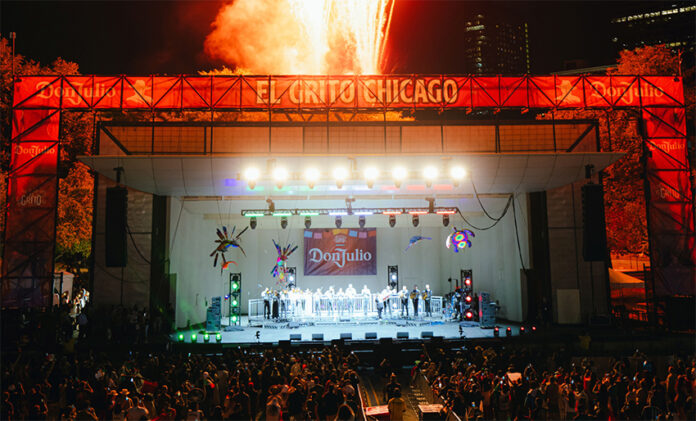
Organizers of El Grito Chicago, the city’s Mexican Independence Day festival, have canceled this year’s two-day celebration in Grant Park, citing fears of heightened immigration enforcement.
The announcement, made Thursday, said safety concerns drove the decision to cancel he Chicago festival planned for Sept. 13-14, two days ahead of actual Independence Day celebrations in Mexico. A ceremonial “Grito” (the cry of Independence) was to be held on Sunday, Sept. 14, led by the consul general of Mexico in Chicago.
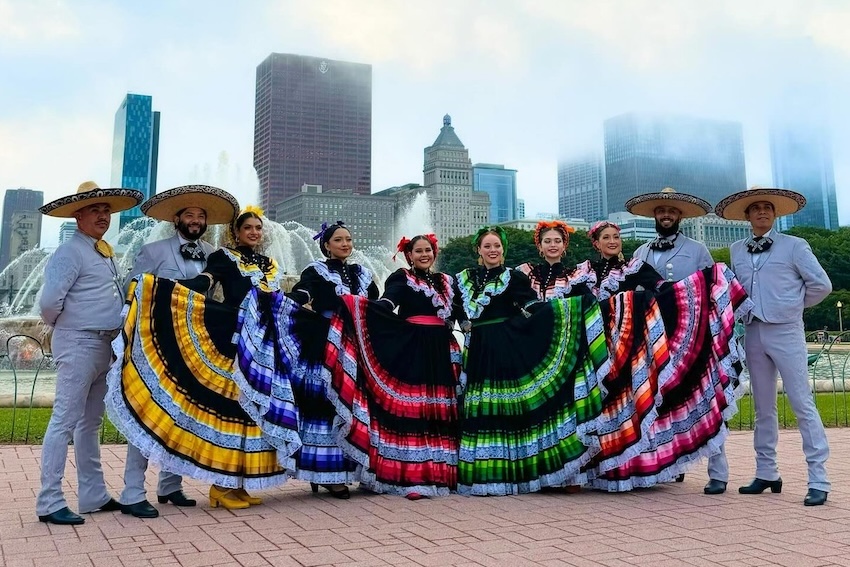
“It was a painful decision, but holding El Grito Chicago at this time puts the safety of our community at stake — and that’s a risk we are unwilling to take,” organizers wrote on Elgritochicago.com, a website now dedicated to ticket refunds.
Priced at mainly US $25 to $45 for single-day tickets, admission was to include live music by top Mexican artists, folkloric dance, mariachis, authentic food, artisan markets and family activities.
German Gonzalez, the festival’s lead organizer, cited racial profiling and the lack of due process for those arrested make holding the event too much of a risk. “And at the end of the day,” he said, the [Trump] administration is looking to provoke.”
Illinois Gov. JB Pritzker had warned that deportation raids could begin in Chicago as early as this week, with roughly 300 agents stationed at Naval Station Great Lakes and federal processing expected at the Broadview immigration facility.
He accused U.S. President Donald Trump aide Stephen Miller, the architect of the crackdown, of deliberately timing the surge to coincide with Mexican Independence Day.
“Let’s be clear: the terror and cruelty is the point, not the safety of anyone living here,” Pritzker said.
About 25,000 people were expected at El Grito Chicago, which debuted last year as a family-friendly alternative to unregulated street caravans.
Chicago is home to one of the nation’s largest Mexican communities, with more than 21% of residents identifying as Mexican, according to U.S. Census data cited by CBS Chicago.
Cook County — composed mostly of Chicago but also cities such as Elgin and Cicero — ranks third nationally in Mexican immigrant and Mexican American population, behind Los Angeles and Harris (Houston) counties.
Reyna Torres Mendivil, Mexico’s consul general in Chicago, said her office supports at least 17 Independence Day celebrations across Illinois and Indiana, though some may be shifting venues or moving online.
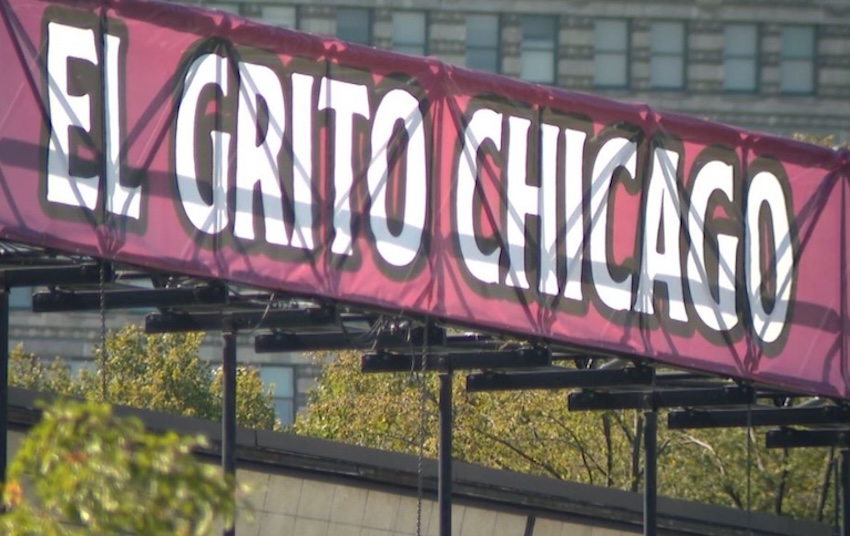
“Nothing of what may happen negates the pride of being Mexican and of celebrating our heritage, with our family, with dignity and respect,” Torres Mendivil said in the Chicago Tribune.
Other area events will take place, such as this Saturday’s 24th annual Mexican Independence Day Parade in Pilsen, a historically Latino neighborhood in Chicago.
“We are confident that nothing is going to escalate, nothing’s going to happen,” said Vicky Lugo, secretary of Pilsen’s chamber of commerce and a parade organizer. “We’re not changing plans anytime soon.”
Event organizers in Pilsen and elsewhere said they will be adding volunteers to watch for immigration activity and distribute “know your rights” cards.
Meanwhile, a Sept. 14 parade in the city of North Chicago has been canceled by the organizing Fiesta Patrias group; however, a parade the same day in adjacent Waukegan, Illinois is still on — for now.
Waukegan officials said they are closely monitoring ICE activity and will make a final decision on their parade closer to Sept. 14.
With reports from Chicago Tribune and CBS Chicago
Federal forces quickly rescue 2 security agents kidnapped by gang members
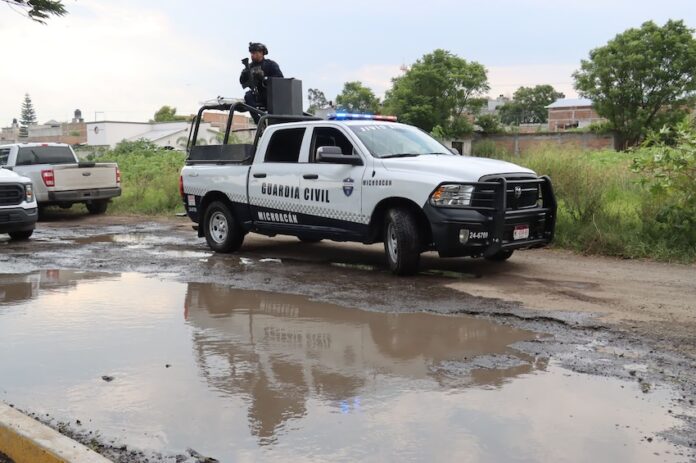
Two Security Ministry (SSPC) agents were kidnapped on Thursday by members of a crime gang in the western state of Michoacán, but were quickly rescued after a rapid deployment of federal and state officials.
Three suspects were detained and, as operations continued, a previous kidnap victim was also freed.
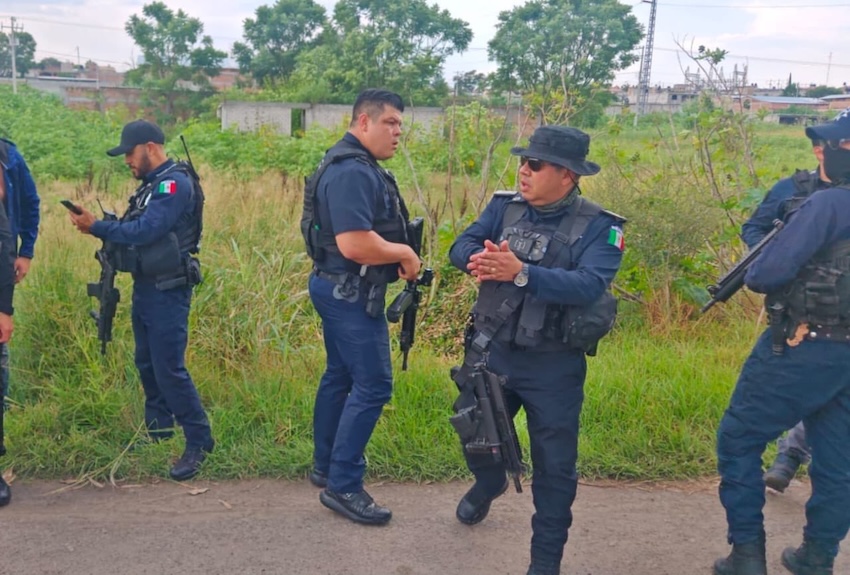
SSPC officers Josselyn Herrera Noriega and Carlos Calderón Velázquez were conducting an investigation in the municipality of Álvaro Obregón near the Morelia international airport when the incident occurred.
According to the website El Blog del Narco, armed thugs accosted the agents in their vehicle, stripped them of their weapons and beat them, before carrying them off.
When the agents failed to check in with headquarters, a rescue operation was quickly organized. The SSPC contacted state authorities and coordinated maneuvers with the Defense Ministry (Sedena) and the National Guard (GN).
Details of the mission have not been released to the media, but the newspaper El Universal reported that unnamed federal authorities said one of the suspects confessed under interrogation to being a member of the notorious Jalisco New Generation Cartel (CJNG).
On Thursday evening, Security Minister Omar García Harfuch posted a message of gratitude on X:
“Today in Álvaro Obregón, Michoacán, two SSPC colleagues were deprived of their freedom while conducting investigative work. Thanks to the immediate deployment of [Sedena and the GN] as well as state authorities, both were rescued alive and are safe.”
García Harfuch singled out the Michoacán Attorney General’s Office, the state government and the state Security Ministry for their assistance in carrying out the operation. He also praised the rescued investigators for their bravery and service to the nation.
The kidnap of the SSPC officers could have been in retaliation for the Aug. 27 capture of alleged CJNG boss René Belmonte, aka “El Rhino,” in Uruapan, Michoacán
Mexican authorities and the CJNG have clashed several times in Michoacán this year.
Three soldiers were killed in that state by the CJNG during a series of attacks in March. The same cartel was blamed for an April incident in which 10 Michoacán highways were blockaded and two police officers were slain.
The Army and the CJNG engaged in a shootout in western Michoacán in July.
With reports from El Universal, La Jornada, Milenio and El Blog del Narco
Heavy rains and flood risk continue in much of Mexico after Lorena veers away from Baja
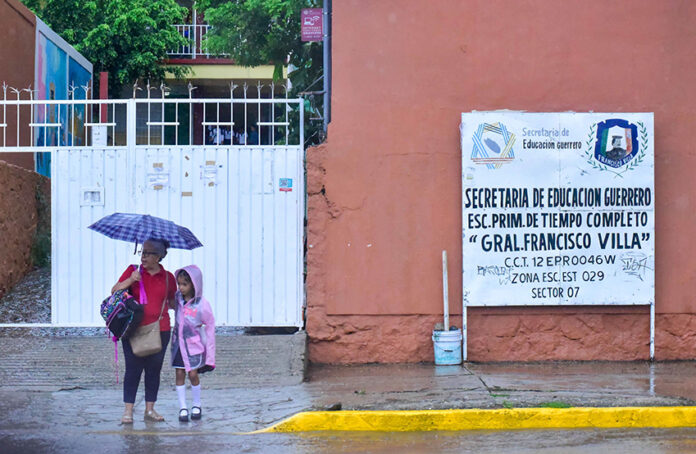
The remnants of Hurricane Lorena continue to lose force, but the post-tropical cyclone could still wreak havoc in northwestern Mexico.
Coastal watches and warnings were issued for the Baja California Peninsula through the weekend, even as the National Hurricane Center (NHC) said Lorena would continue to weaken, dissipating by Sunday night.
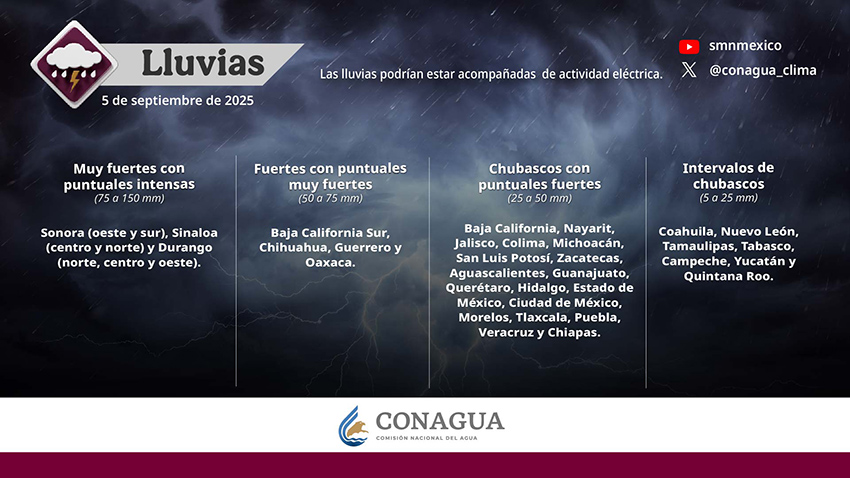
Despite its deterioration, Lorena’s cloud formations, combined with the Mexican monsoon, Tropical Wave 30 and other low-pressure systems inland, were forecast to produce significant rainfall across much of the country throughout the day.
The National Water Commission (Conagua) is forecasting intense rain in the states of Sonora, Sinaloa and Durango on Friday, with up to 150 mm (6 inches) of rainfall. Baja California and Chihuahua could see up to 75 mm (3 inches) of rain, as could the coastal states of Guerrero and Oaxaca further south.
Conagua warned of landslides, rising river and stream levels, as well as flooding and overflows in low-lying areas. Officials urged residents to heed the warnings from the National Meteorological Service (SMN) and to follow the recommendations of Civil Protection agencies.
Officials in Baja California and Baja California Sur (BCS) issued flash flood warnings and cautioned residents to be on the alert for landslides, especially in areas with higher ground.
BCS officials ordered schools closed across the state on Friday and the Welfare Ministry suspended activities in the state.
As the storm’s outer bands remain powerful, BCS officials are preparing for an additional 200 mm (8 inches) of rain, as are officials in Sonora. Total rainfall in the region could exceed 300 mm (12 inches), the NHC said, since Lorena began lashing the peninsula on Wednesday.
Conagua warned of high winds crossing the Gulf of California, affecting the northern states of Chihuahua, Coahuila, Nuevo León, Tamaulipas and San Luis Potosí, alerting residents to the possibility of downed trees and billboards.
Swells generated by Lorena will continue to affect portions of the west coast of Baja California Sur through Friday, the NHC warned. As these swells can cause life-threatening surf and rip current conditions, residents are advised to heed instructions from local officials.
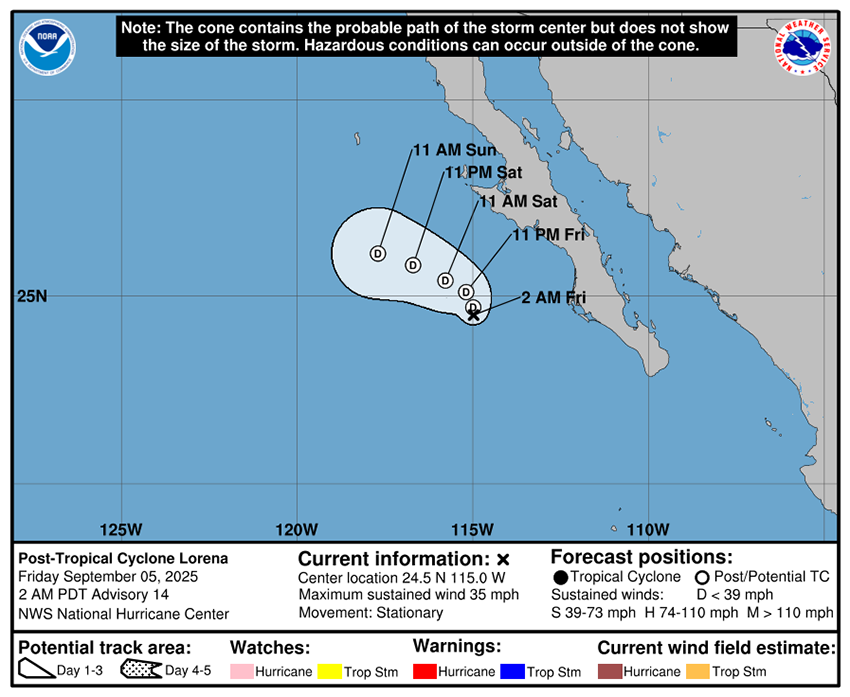
At 5 a.m. Friday, Lorena was roughly 170 miles west of Magdalena Bay and Cabo San Lázaro, Baja California Sur. Though categorized as stationary, it is forecast to move north-northwestward early Saturday before turning west-northwest over the rest of the weekend.
On Wednesday, Lorena was classified as a Category 1 hurricane, with wind speeds around 75 miles per hour while sitting off the coast of the Baja California Peninsula, but by Thursday morning it had weakened to tropical storm status.
Originally forecast to make landfall in Baja California, Lorena still had sustained winds of 35 mph, with gusts hitting 55 mph Friday morning.
The NHC said that as Lorena moves north-northwest, it could dump 1 to 2 inches of rain across the Southwest U.S., with isolated areas in Arizona and New Mexico seeing up to 4 inches.
With reports from El Financiero and Aristegui Noticias
Living like Mexican aristocracy: A Roma Norte weekend guide
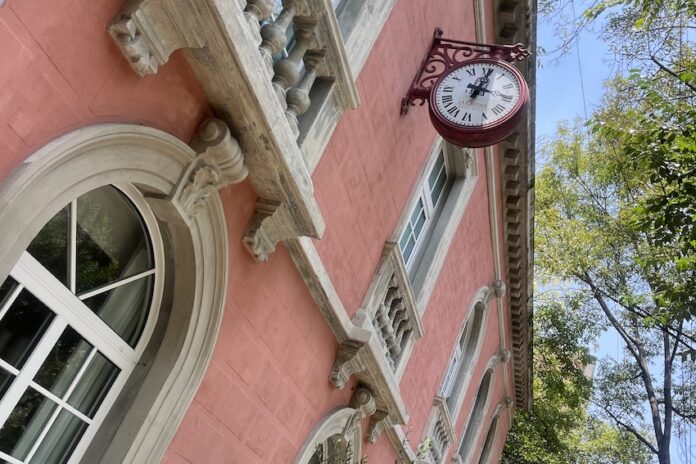
The turn of the century has always appealed to me. I’d love to spend a day in early 1900s Mexico City, when German cars and coffee shops first arrived. Books like Kathryn S. Blair’s “In the Shadow of the Angel” materialize a glamorous era in Mexico. One which, by all accounts, wasn’t glamorous for all. But for some, life under the Porfiriato was indeed a box of exquisite Debauve & Gallais chocolates (imported from France, of course) consumed with either Lipton’s tea or crisp champagne.
The period before the Revolution was an epoch of grand proportions for the country’s elite, where lavish dinner parties and intellectual gatherings at the Jockey Club reigned supreme. The Roma Norte of today brims with aristocratic remnants, making it a lovely escape for a long weekend in Mexico City.
Step into Mexico City’s gilded age in Roma Norte
![]()
The first thing visitors notice about Roma Norte is its European flair. The Mexican aristocracy during Porfirio Diaz’s reign was heavily influenced by European customs. To emulate Paris meant modernization, and proximity to Paseo de la Reforma and Chapultepec Park made Roma Norte the perfect place to start. By 1910, Roma Norte emerged as the epicenter of Mexico City’s aristocratic lifestyle. Streets were lined with Beaux-Arts, Neoclassicism, and Belle Époque mansions and cutting-edge technologies: running water, sewage systems and electric lighting.
To live here, one had to look the part. French fashion was a high society favorite. Ladies donned silk gloves and men — with their signature mustache — sauntered about in waistcoats and top hats. Clothing was either made-to-order or imported directly, helping boost the popularity of Palacio de Hierro, Mexico’s first department store. Modeled on Paris’s Le Bon Marché, one could buy European textiles to crystalware, locally-produced furniture to imported perfumes.
Aristocratic daily life in Porfirian Roma Norte
While gentlemen went to work in finance, import/export, architecture and civil services, ladies directed an elaborate hierarchy of household staff and philanthropic organizations. Social gatherings, like literary salons, gave women the opportunity to exercise their influence in educational and cultural arenas. After fulfilling their duties, Roma Norte’s inhabitants enjoyed art galleries, the opera, horse racing, and afternoon English tea and crumpets. Going for daily strolls along Paseo de la Reforma was common — at the time, the boulevard was lined with fountains and sculptures just like the Champs Élysées.
Your aristocratic adventure at Casona Roma
Reliving the grandeur of Mexico’s aristocracy requires two things: a nostalgic hotel in Roma Norte and an itinerary fit for a lord or lady. I decided to base my adventure at Casona Roma, a colonial-mansion-turned-boutique-hotel situated on a leafy corner of Avenida Durango and Calle Cozumel. I was immediately taken by the facade’s bold salmon color and a striking red analog clock above the entrance. Initially built as a private home in 1923, the building retains its original French-style windows framed with stone arches and a corniced trim roof.
![]()
Thirty-two guest rooms feature high ceilings, Mexican textiles and the prettiest toilet paper I’ve seen with delicate damask imprints. Floor-to-ceiling windows open to the street below, a particularly delightful feature as it allows Mexico City’s distinct soundscape to filter in. Best of all, the location is ideal for recreating an aristocratic adventure in just three days. So grab your parasol and get ready to spend a long weekend in Roma Norte as a turn-of-the-century noble.
Roma Norte, Mexico City weekend guide
Now that you know where to stay, it’s time to live the experience with this day-by-day itinerary, which covers all the stops of a high society aristocrat: food, theater, shopping, and intellectual pursuits.
Mastering the art of El Paseo (Day 1)
The first stop on this Roma Norte Mexico City weekend guide is, of course, breakfast. Pop into the sunny Aquiles Restaurant on Casona Roma’s ground floor and dig into the chilaquiles, a local favorite. Once fueled, find a fine frock for your afternoon paseo at one of Roma Norte’s renowned boutique shops. Aurelia, Redonda, and Lobo Vintage are steps away, and many items are made in Mexico. Palacio de Hierro is home to an array of luxury brands, and Antiquísima is an eclectic antiques shop where you can pick up unique treasures.
By now, you should be hungry. Fónico will make you feel like you’re a 20th-century count or countess, and La Tabernita offers a touch of Spain. Craving sopa de lima? Try Fondita 99.99. After lunch is the ideal time for a stroll: do you want to pasear down Paseo de la Reforma or 120-year-old Avenida Durango? The choice is yours.
Return to Casona Roma with enough time to refresh before your private agave spirit tasting in the Akambe Mezcal Bar. Leslie, the onsite experience expert, has a profound passion for sharing Mexico’s cultural quirks. And for getting you a little tipsy.
Salon culture and intellectual pursuits (Day 2)
![]()
Today is a full day of exploring high society haunts. Start with coffee and a pastry at Casa 1900, whose aesthetic exquisitely replicates turn-of-the-century Mexico City. Just a block away is Casa Museo Guillermo Tovar de Teresa, a Porfirio mansion with original furniture and a lush courtyard garden.
To recreate your late morning literary salon experience, you’ll have to buy a book — Librerías El Sótano Roma and Polilla Librería sell books in English and Spanish, and Cafebrería El Péndulo Roma features indoor/outdoor seating areas.
Between 4:00–7:00 p.m., La Macaría at Casona Roma hosts private tea time experiences. Knowledgeable staff will teach you how to smell, taste, and pair three different teas with a generous tiered tray of savory sandwiches and sweet pastries. It’s the perfect downtime before catching a live theater performance at Teatro Casa de la Paz, half a block north. Make a reservation at Suchi for dinner after the show, indulging in the signature Dorito Roll and fresh tuna sashimi.
The art of aristocratic leisure (Day 3)
Wake up at your leisure, as today is all about self-care. Book a massage or facial at the hotel spa on the rooftop, or for something innovative, Koti Casa Social Wellness offers cold plunges and sauna treatments. Once revitalized, spend the afternoon checking out Roma Norte’s many art galleries, including Proyecto H, Hispania, and Galeria Mascota. Dinner at Cantina Filomeno is a must: from the period decor to the wandering mariachi, this may be Mexico City’s ultimate Porfiriano-style dining experience.
![]()
Since the early 1900s, Roma Norte has endured revolutions, earthquakes and gentrification, yet still leads as one of Mexico City’s most coveted neighborhoods. The art and architecture, walkability, and culture continue to attract both visitors and locals seeking a refreshing staycation. This is just one of many ways to spend a long weekend in Roma Norte.
What would you add to this itinerary? Let us know in the comments below.
Bethany Platanella is a travel planner and lifestyle writer based in Mexico City. She lives for the dopamine hit that comes directly after booking a plane ticket, exploring local markets, practicing yoga and munching on fresh tortillas. Sign up to receive her Sunday Love Letters to your inbox, peruse her blog or follow her on Instagram.
Guadalajara celebrates one of its most iconic dishes: The torta ahogada
The city of Guadalajara, Jalisco, is gearing up to celebrate one of the city’s most iconic dishes with Torta Ahogada Day, a one-day festival on Sept. 7.
Savory, spicy and swimming in sauce, the torta ahogada is Guadalajara’s unique take on Mexico’s most famous sandwich. It is also considered a symbol of Guadalajara’s cultural identity, along with tequila and mariachi music.

The event, which is back for its fourth edition this year, will take place at the city’s Historic Center on Paseo Fray Antonio Alcalde, between Pedro Moreno and Morelos streets. Starting at 9:30 am, it will bring together dozens of torta ahogada makers, families and local food enthusiasts to celebrate the emblematic dish.
Attendees can expect live mariachi music and various activities, including a contest dubbed “Ponle Salsa a Tu Torta” (Put Sauce on Your Torta). In this event, each community will present creative sauces to accompany the tortas ahogadas. Both judges and attendees will choose the best sauce.
One of the most anticipated activities is the distribution of free tortas ahogadas, a program that will be revealed on the day of the event through the official Cultura Guadalajara social media channels.
The Tapatío roots of the torta ahogada
Tortas ahogadas are ubiquitous in Guadalajara. The dish was created over a century ago by Ignacio Saldaña, known as “El Guerito,” who is credited with serving the first torta dipped in chile de árbol and tomato sauce.
The dish consists of birote (a bread similar to baguette, but shorter, and found exclusively in Guadalajara), filled with pork meat and drenched in a spicy sauce.
In 2022, the City Council declared Sept. 10 the Municipal Torta Ahogada Day, aligning the celebration with Independence Month. This year, however, the event will be held at an earlier date to allow more people to participate.
The event not only seeks to promote the love for torta ahogada, but also to reinforce the sense of identity and local pride.
With reports from El Informador

